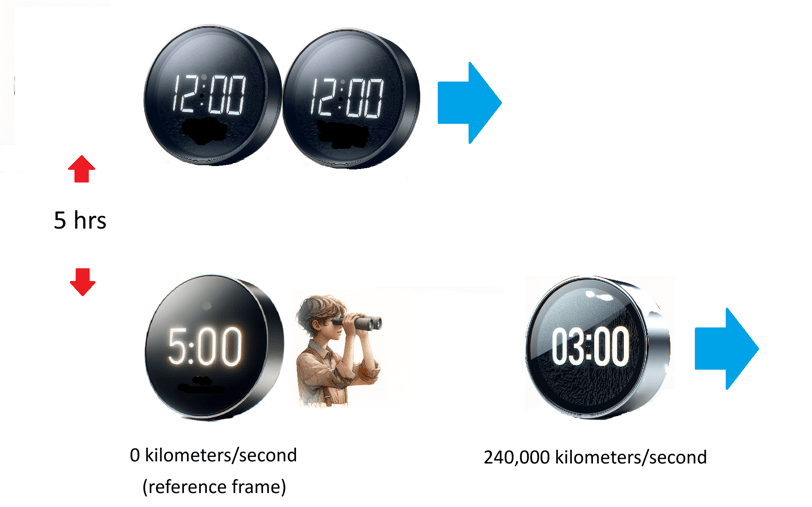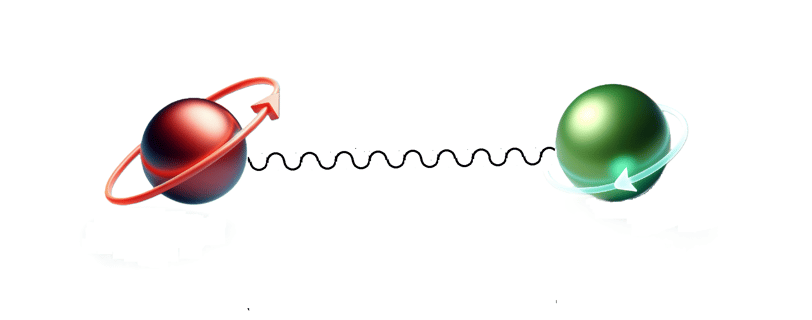Simbalien
Simple but alien
Delve into science and phenomena with a fresh, simplified approach to understanding the universe.
Curiosity Unleashed
★★★★★


No, the focus of this website is not first grade education of extraterrestrials. The purpose of the site is to explore how ideas that make our senses uncomfortable might be applied (relatively) simply to solve problems.
Some examples may be of help to explain this. Take the image below:


A boy looking to the right through binoculars. But the Microsoft Paint Copilot AI that generated it had to be told to produce a boy looking to the left through binoculars. It appears that the perspective of the AI is “inside the computer looking out”. You have to imagine the image you want from this perspective, which isn’t so very alien but is a little weird. But the fix is really simple.
Another example has been around for 120 years. We see references to it frequently enough in the media that we may feel that it has been normalized. The subject is special relativity.
Say you are traveling in a spacecraft at escape velocity, about 8 kilometers/second. A light ray passes by at the familiar speed of 300,000 kilometers/second. It naturally feels right that the speed of the light ray relative to you should be 299,992 kilometers/second. It is not. Its speed relative to you is 300,000 kilometers/second. The speed of light must be the same for all observers. To most everybody living in 1905 when Einstein first published his paper on special relativity, this would have seemed alien.
A result of this is time dilation.


Suppose one clock showing 12 o’clock and moving at 240,000 kilometers/second relative to the boy as observer passes another clock, also showing 12:00, which is stationary relative to the boy. When the boy’s local clock shows 5:00, the other clock will show 3:00. (Since this other clock is moving away from him at 4/5 the speed of light, he will not actually see the 3:00 image with his amazingly powerful binoculars until 4 hours later, but he can still deduce that the clock showed 3:00 relative to him when his local clock said 5:00.)
The ideal of time dilation, that a clock moving away from us appears to move slower than one not moving relative to us, should seem alien, just as light having the same speed relative to all observers is. Yet once the result about light speed is accepted, the amount of time dilation as a function of speed is easily determined using a simple application of the Pythagorean Theorem (See any source on special relativity). Simple but alien.
Finally, take the idea of “nothing”. We think we can conceive of it, say as below.


Of course, black is only the absence of visible light, not necessarily of everything. The entire universe before ionization could be hidden in there.
The problem with “nothing” is really the problem with “everything”. (We are talking about an unqualified “everything”, not some reference like “everything in the room”). “Nothing” is a condition such that if you have something, that something is not in “nothing”. Where does something come from? Everything. So “nothing” must not contain anything that is in everything.
OK, the above paragraph seems exceptionally silly. We have to get a little technical to realize why it points to a problem. Suppose we have two sets A and B. We say A has more elements than B if after matching each element in A to exactly one element of B, and no element of A or B is involved in more than one match, some element of A is left unmatched. Take {1, 2} and {3}. Match 1 to 3 and 2 is left over. Trivial, for finite sets. Now take the set of counting numbers {1,2,3,…} and the set of real numbers. By the same reasoning, it can be shown that there are more real numbers than counting, even though both sets are infinite.
Even for infinite sets it can be shown that the set of subsets of a set has more elements than the set itself. What is everything if not the set of all somethings? So the set of all sets of somethings has more elements than everything. But that is absurd, since a set of somethings is itself something, and belongs to everything. So everything has more somethings than everything. In other words, our notion of nothing as the absence of everything does not work, as “everything” is ill-defined.
Problems similar to that with “everything” above were recognized around the turn of the 20th century. Mathematicians use well axiomatized rules for handling sets, all of which must be subsets of a “universal set”, to avoid the problems one can have with “everything”. The null set would then correspond to “nothing”.
Nature or our reality is difficult to axiomatize, however, as the difficulty reconciling general relativity and quantum mechanics demonstrates. There could be an advantage in ”nothing” being inconsistent. The great question of how the universe could have come from nothing might be answered that something was always there. To forbid any something from being there is to forbid everything, an inconsistent concept.
All the above discussion saying that even the concept of “everything” is inconsistent must seem alien to most readers. We don’t like the idea that when we conceive of something as familiar as everything (without qualification) we are being inconsistent. But the inconsistency of “everything” does lead simply to the inconsistency of “nothing”.
OK, where can we go with the idea of “simple but alien”? One thing we can look at is what is popularly called “spooky action at a distance”. Quantum mechanics suggests, despite Einstein’s objections, that some information must be passed faster than the speed of light between certain “correlated” particles if they are measured in certain ways. Spin ½ particles correlated so that the total spin of the system is 0 is a common presentation of the “spooky action at a distance”.


The particles might be an electron and a positron or two electrons.
We will look at why there may not be “spooky action at a distance” in such systems. This explanation will get somewhat involved and will frankly take some time to add to this website. In the meantime it is hoped that all the above is more interesting than simply posting “website under construction.”